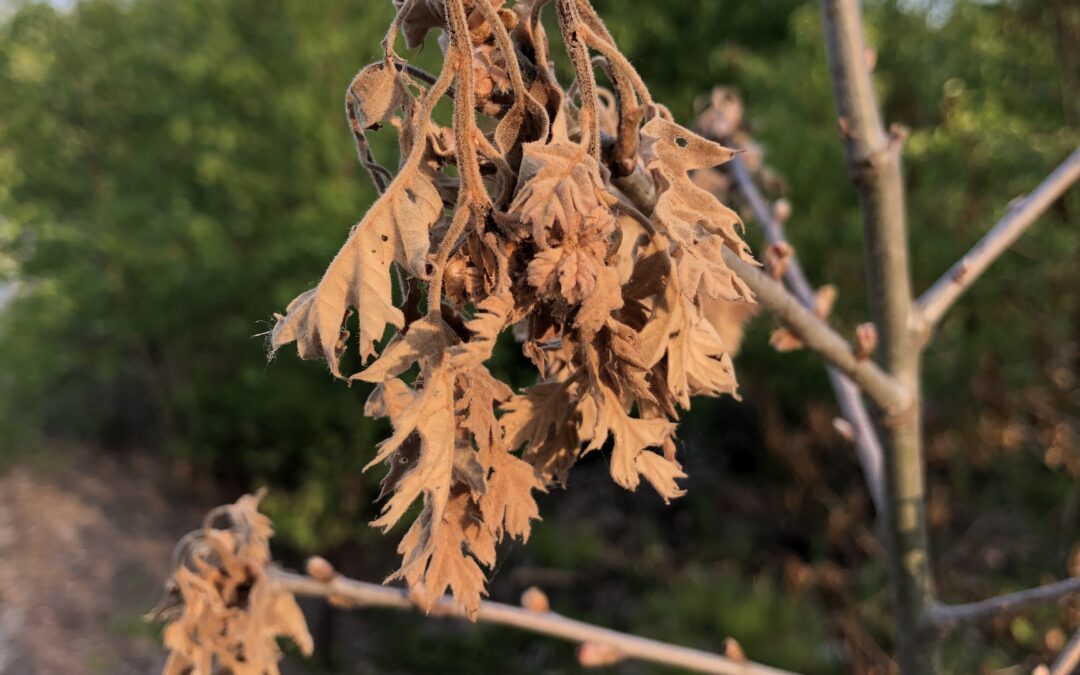It could be a tough year for New Hampshire fruit-lovers. A mid-May frost following unusual early spring warmth has clobbered New Hampshire’s apple orchards following the brutal cold snap in February that pretty much wiped out our peach crop whidamaged berries and grapes.
But it could be tough for wildlife, too. The May frost did unusual harm to red oak and beech forests, leading to concern that some animals won’t have enough to eat this year.
“In my career, I have never seen a freeze that impacts red oak and beech like it has,” said Andy Timmins, a wildlife biologist with New Hampshire Fish and Game. “Trees had just leafed out, those leaves were so vulnerable. Basically, there’s hillsides of oak that just looks like it has been burned.”
“It’s a real unknown what’s going to take place and how that’s going to affect mast,” he said, using the biologists’ term for forest food such as acorns that some wildlife depend on. In particular, a shortage of mast can make black bears more aggressive in approaching homes while seeking garbage cans, bird feeders and other food sources.
As for New Hampshire fruit farms, “it’s not a great outlook,” said Josh Marshall, director of the state Division of Agricultural Development.
The February deep freeze when temperatures fell far below zero “really affected the peach and stone-fruit crops – apples, blueberries, strawberries” as well as grapes, he said, while the frost of May 17-18, when temperatures fell into the 20s after having been unusually warm, harmed blossoms on many apple trees.
“We are a very little (apple) orchard and we lost 99.9 % of our apple crop in the freeze on May 18. We only have a couple of peach trees and we lost that crop from the February deep freeze,” wrote Laurie Loosigian, owner of Apple Annie in Brentwood. “We were on track to have a bountiful crop this year with an amazing bloom and good weather with lots of bee activity during bloom.”
Tim Basset, owner of Gould Hill farm in Hopkinton, said he’s still determining the effect of the May frost on his 15 acres of apples.
“I think it’s going to be OK on the pick-your-own side,” he said. On other hand, he added, an orchard that he owns in Vermont “got froze out” and will have little production.
“We’ve heard different ranges of damage. A lot of the orchards are still waiting to see exactly what comes out, but we’re looking at probably at least 50% or more damage,” said Marshall. “There’s still the possibility of a crop. The more northern you get, the more likely you got totally wiped out.”
Marshall said much of New England region “down to southern Connecticut” was hit by that frost.
There are various ways that farms can reduce the effect of frost, such as running fans or windmills in orchards to circulate air or running irrigation on ground crops, they cannot provide complete protection.
The damage to New England peaches is particularly painful to farmers because the peach crop in Georgia, the biggest production state, was 90% wiped out by frost, which would have raised the price for local fruit.
New Hampshire’s farms are relatively small and so many cannot afford insurance to protect against crop damage.
“Probably 50-50 have crop insurance – it’s an expensive thing to get into over time,” said Marshall. “And even that doesn’t make you whole.”


 Return to the Concord Monitor
Return to the Concord Monitor